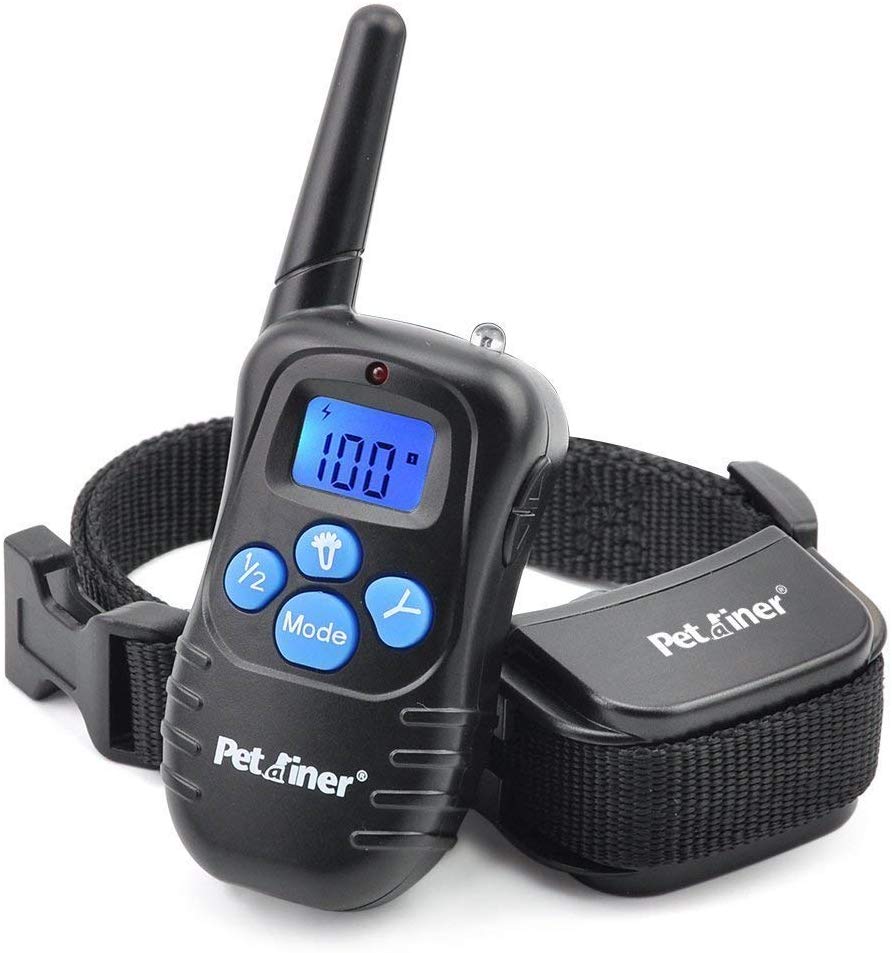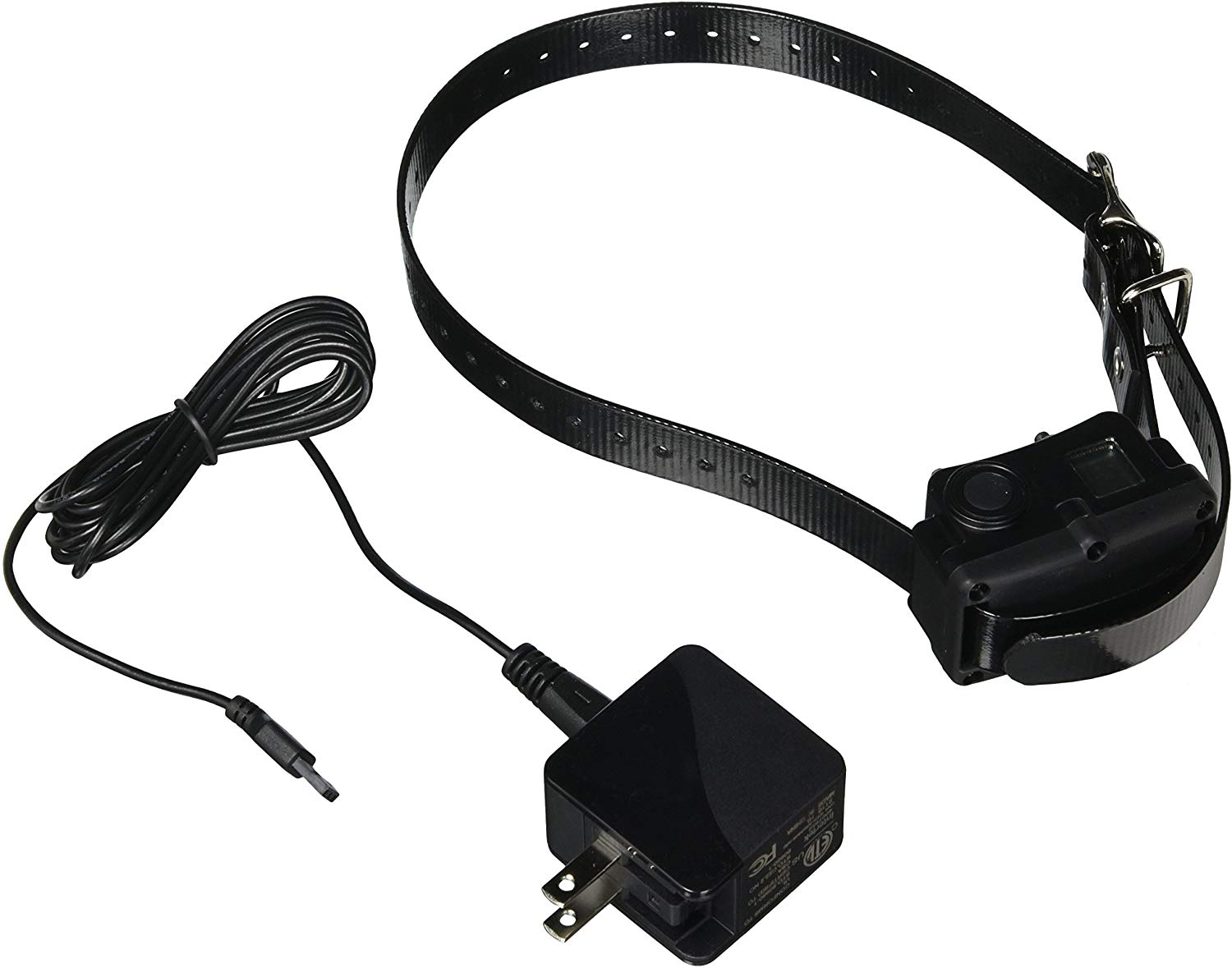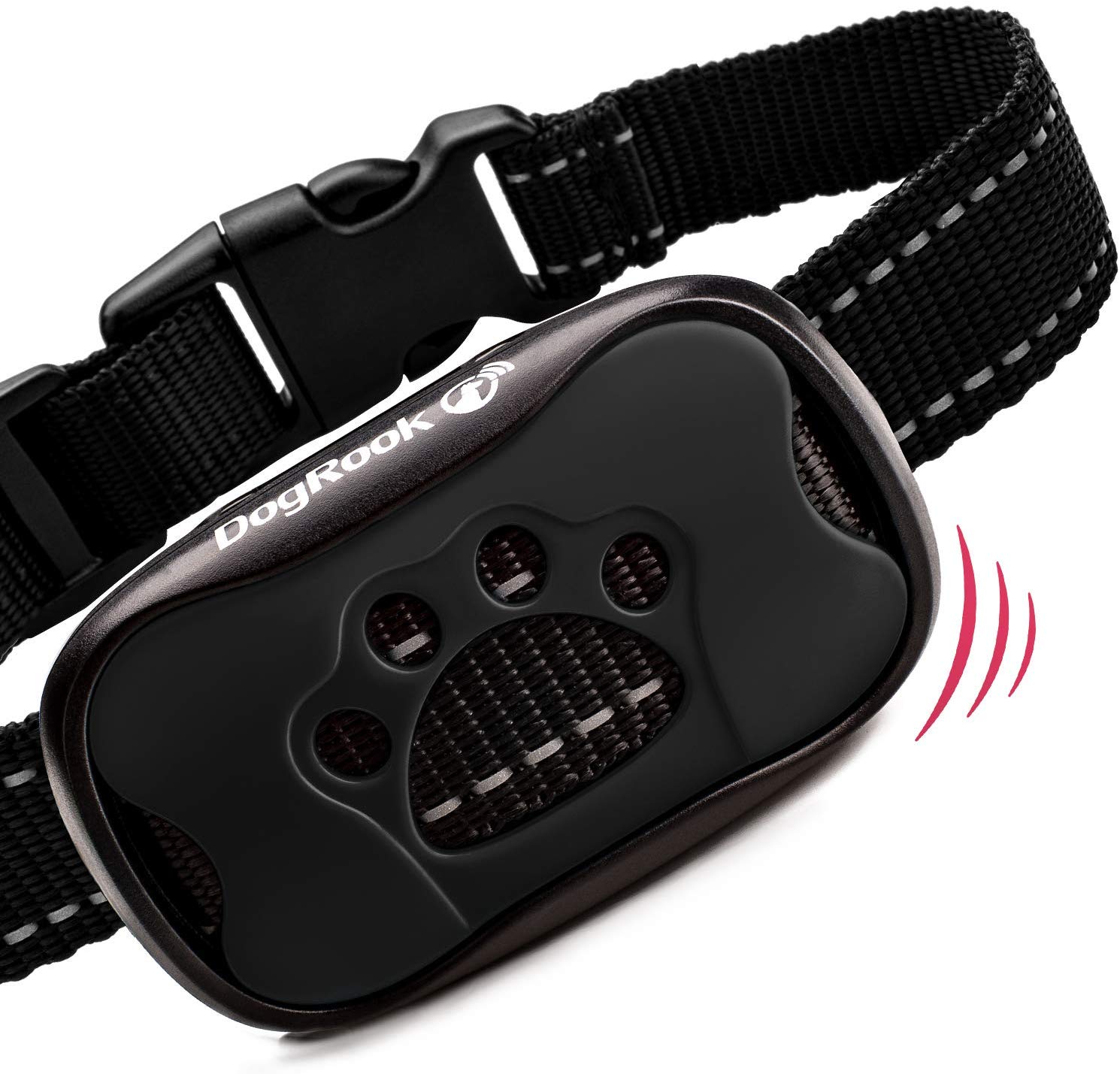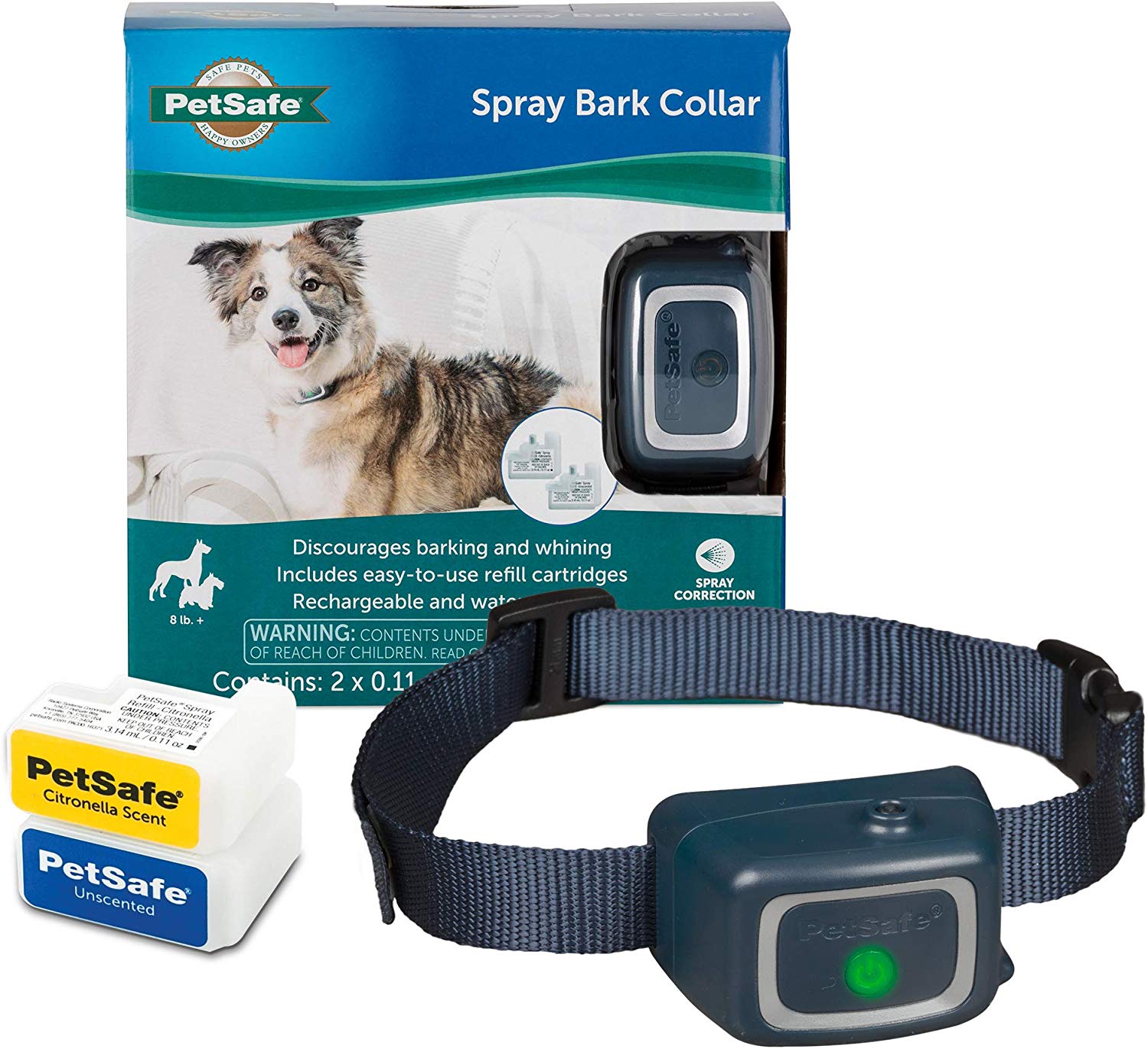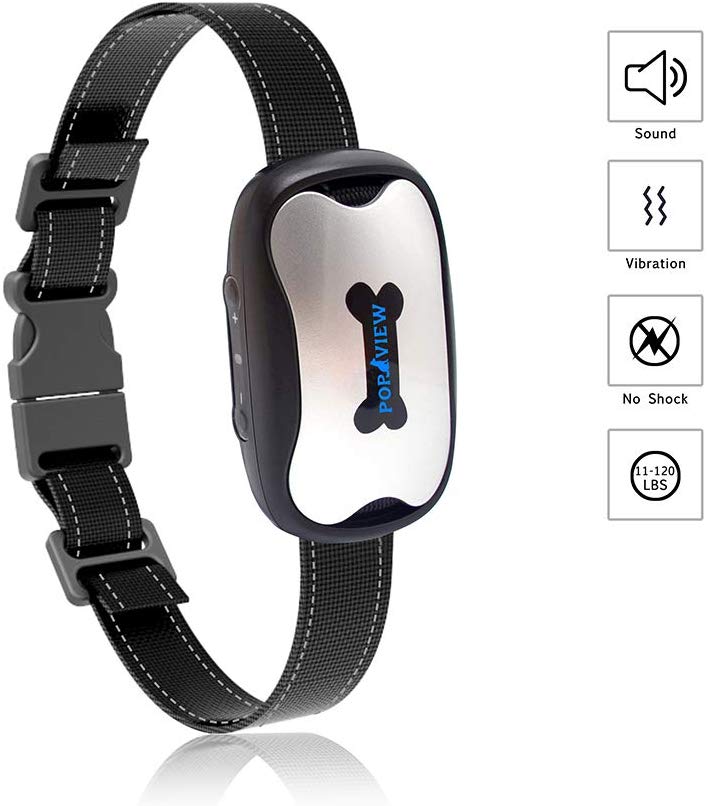Best No Bark & Anti Bark Collar For Small Dogs
Even though dogs bark and that's perfectly natural, excessive barking can sometimes cause serious issues. It can be annoying and even lead to a heated argument with your neighbors. You should certainly use positive training methods to correct that behavior, but sometimes, you need additional support, and that is when you have to look for the best bark collar for small dogs.
The Best Dog Toothbrush: Our Top Picks
1. PetTrainer Dog Training Collar
If you're looking for the bet no bark collar for small dogs, you may really want to put your money on this one from Petrainer. Endorsed by trainers, you can use this collar not just to stop barking but also to correct other unwanted behavior and teaching behavioral obedience, such as sitting, walking, and responding to voice commands.
The good thing about the collar is that it features three stimulation types, including sound and vibration. You can choose from multiple levels of correction– it can be as low as 0 or as high as 100.
Durability is never an issue, as it is water-resistant. The use of nylon means it is going to serve you well and feel comfortable to your dog as well. You may want to buy it if your dog's neck circumference is between 15and 22 inches.
Overall, it is a reasonably good choice, but some customers have mentioned that the remote could have been better.
PROS
CONS
2. SportDog NoBark Collar
This highly sensitive e-collar is the best bark collar for small dogs, and it works amazingly well because it is capable of detecting vibrations from your dog's vocal cord. It activates a corrective response to prevent barking.
The collar features a patented bark sensor system, which means it is a lot more reliable as compared to other similar e-collars in the market. It uses corrective response starting at very low levels and gradually moves up if your dog doesn't respond to the stimuli.
Interestingly, you can select from three modes, progressive correction, learning, and user mode. It is suitable for dogs with neck sizes between 5 and 22 inches. Overall, it performs very well, but keep in mind that it may be a bit on the expensive side.
PROS
CONS
3. PetSafe Spray Anti-Bark Device
If you believe that a shock collar may not be the best anti bark collar for small dogs, you may want to try one of the best citronella bark collars from PetSafe.
It discourage barking by releasing citronella spray, and it is going to serve you well for long, as each can is capable of delivering 400 sprays. It is also water resistant, so durability won't be a huge issue.
Overall, it may serve as an alternative to e-collars, but be sure to use it with positive training tactics to get better results, and use it only on your dog weighing more than 8 pounds.
PROS
CONS
4. DogRook Bark Control Collar
For those looking for an alternative to static shock collars, the DogRook has the solution with this product, which is capable of delivering seven levels of sound and vibration.
Instead of delivering a shock to your small dog, this best no bark collar for small dogs vibrates to deter barking. You may get reasonably good results with this one if you have a small or timid dog. What makes it effective is the fact that it first delivers a warning signal – it uses a short beep first, then another longer beep, and then activates vibration too.
It works well for most dogs without sending them in a depressive mode because the collar itself enters a minute long hibernation mode after reaching the seventh level. It is suitable for both short and long-haired dogs because it features two sets of plastic prongs.
Overall, it is an effective option suitable for dogs between 11 and 110 pounds. The only issue some people have mentioned is that it may not be as effective for really fluffy dogs.
PROS
CONS
5. POP View Bark Collar
You may like this anti-bark collar from Pop View if you're mainly looking for a vibration type collar instead of a shock collar. You can choose from as many as three training modes as well as seven levels of sensitivity.
The good thing is the collar comes with a small LED screen, so it won't be an issue to check the current sensitivity level. Because it delivers vibrations only, you can surely try a higher setting to get better results. It is quite sensitive and intelligently detects vibrations in your dog's vocal cords. Moreover, it doesn't send vibrations immediately but starts with an audible warning beep, which helps get better results.
Durability is not going to be an issue with this product, as this waterproof collar will serve you well for long. It also comes with a money-back guarantee. The only consideration is that it may be a bit expensive than other similar models.
PROS
CONS
FAQ - A Buyer's Guide
Are Bark Collars Safe for Small Dogs?
In general, they are although a lot of dog lovers would consider a bark collar a last resort. It is natural to feel frustrated when you have to deal with excessive barking. Before trying anything out of the ordinary, barking is normal.
Dogs bark when they are excited, want attention and when they're frightened and lonely. High quality training collars are not designed to punish and they don’t hurt the dog in any way. It’s more an unexpected surprise. What’s delivered via the collar is the equivalent of a static shock you get walking on nylon carpet. However, it is essential to buy the best collar that relies on a patented technology that activates after detecting the correct sound and vibration.
Even so, there are different points of view on the use of the best small dog bark collar. For instance, Michigan State University researchers don't recommend electric shock collars and suggest dog owners should always stick to positive training methods.
If you're concerned about hurting your small dog with barking collars, you may want to avoid shock collars and try citronella spray or tone correction. These spray anti-barking collars are very safe since they only release a spray of citronella when they detect a barking. Citronella is strong enough to feel unpleasant in a sensitive nose and disrupts their barking. Although it’s gentler than a shock collar, this is still not considered a positive training as recommended by dog trainers.
The truth is that anything used incorrectly will cause problems and confuse your dog, and a barking collar is no exception. The idea is for the dog to make the connection between barking and future negative consequences whether it's a shock, spray in the face or a loud noise. Dogs live in the moment. A future consequence is an abstract. If you have a bright dog like a Collie, it will quickly make connections but the whole concept is a challenge for the average dog. Some dogs are just nice but dim, and joining the dots is beyond them and they accept the shock, vibration and sound and carry on.
Therefore, you need to be cautious about deciding you need to use these collars for dog s barking and if you do, ensure there’s only one training objective, like to help your dog to stop barking at night, and boost up positive reinforcements for other acceptable behavior with play to reinforce bonding and with food, the great motivator. If you really have to use a collar for your dog to stop barking, he only needs to wear it when the problem is likely to occur. After a while, this on its own will signal it's time to stay quiet.
What is the Best Anti Bark Device for Small Dogs?
Dogs bark at night because this is the time when instinct says they should be bedding down with the pack for security. It’s their natural instinct is to bark or howl to find them and some dogs feel this urge stronger than others. For most mammals, being in the dark is when they feel most vulnerable and to a dog, you are the alpha they rely on to protect them. If you are in the house, and your dog is barking at night, the most obvious solution is to let your dog bed down where it can see you and hear you.
When you are not around, preventing your dog from excessive barking is harder. Dogs are strongly social and barking when alone is a sign of stress and anxiety. It’s also a noise nuisance and most complaints about a barking dog are about the dog barking non stop in the daytime. When your dog is distressed and neighbors complaining, it becomes necessary to look for fast and effective alternatives besides leaving toys to play with and a jumper or blanket with your scent on it.
Using a bark collar is a good idea, especially when you use them in conjunction with positive training methods although you will need a way to find out if its working. Choosing the right bark collar for your dog’s size and breed needs careful consideration. There are a lot on the market so perhaps these points will help.
Electric Bark Collars: E-collars are increasingly popular and designed to deliver a small electric shock to divert your dog from barking. The shock is harmless and doesn't hurt. You can now find e-collars that are actually radio-controlled electronic devices, whereas others use vibration and tone settings. Some high-end dog collars come with a built-in GPS locator. These dog collars deliver shocks in different intensities, so you can select the most suitable for the size and breed of your dog.
- Ultrasonic Bark Collars: In order to deter barking, these collars produce a high-frequency sound inaudible to humans that is a distracting irritation for your dog. Dogs learn to associate the high-pitched sound happening when they bark and the idea is they don’t bark again to avoid it. If you are lucky, your dog might only need to bark once, must most dogs need to experience the sound consequence over a few barking sessions to make this type of cognitive connection. Compare that with how fast your dog learnt to associate food with the sound of a chips bag being opened.
- Vibration Bark Collars: Many dog owners believe vibration bark collars are best because they don't harm your dog in any way, shape or form, and can be used easily with positive training methods. Sensors detect sound and activate the collar to produce vibrations as a gentle distraction. It’s like the vibration on your cell phone. It is possible to adjust the intensity upwards for larger dogs. For tiny toy breeds and small dogs like Shih Tzus you may want to opt for a remote vibration collars in conjunction with other technology like dog watching apps. They are also useful if you have a breed that does a lot of dog talking, like chatty Huskies. You’ll need a camera. The app sends a notification when barking over a set time as been detected and you decide whether or not to activate the collar remotely. This allows you to focus sharply on retraining to stop extended barking and since the best apps also keep a log, you can check for anything on their environment that is acting as a trigger.
- Spray Bark Collars: These are new to the list and are suitable for small dog owners who don't want to use anything that delivers a shock or high-pitched sound. Whenever your dog barks unnecessarily, the collar activates and releases a burst of citronella spray to your dog's snout. The spray is harmless to your dog as well as your family and the environment as a whole but the spray will activate whenever they bark, even if that’s as they play. These citronella bark collars are considered more humane and less frightening and perhaps are more suitable for use with nervous breeds and anxious dogs.
Which is the Most Effective Bark Collar?
It’s difficult to change unwanted behavior when you are not around but perhaps people expect too much from a dog. Even the cleverest recorded only had the cognitive capacity of a 4 year old child. With most dogs, think how you would deal with unwanted behavior in a 2 year old.
There’s no dog lover on the planet that wants to leave their pet home alone feeling scared. But sometimes it has to happen and dogs won’t change habits good or bad, without some sort of motivation. Barking is dog communication and the instinct to use it when home alone takes over whether it’s in response to a perceived threat to defend the den or to make long distance contact with the rest of the pack. This is natural dog behavior. It’s not bad behavior. It’s just not the behavior humans want. A bark collar can work as part of retraining but you will have to pay attention to a number of points. For instance:
The Size and Breed of Your Dog
A bark collar has to fit as well as a normal collar to work deliver shocks, sprays or vibration and sound effectively. Run your finger between the collar and dog’s neck to check the collar not too tight or too loose. Most collars won't work for the small neck of a Chihuahua or similar small dog. You may want to use a collar that has a contact jaw design and wraps around the throat of your dog for better results. However, no bark collars are not recommended for puppy training or for use on dogs under 8 lbs.
Consider the Sensitivity Level of Your Dog
Some dogs focus so intently on what they are doing that shocks and sprays don’t even register and some of the bigger breeds have a surprisingly high level of tolerance even the higher shock settings don’t work. Collars are designed to be unpleasant not painful. Other dogs are more sensitive, particularly if they are already stressed out and anxious and on high alert for danger.
Nervous dogs should not be shocked or frightened into complying. That’s just bullying and only increases fear and anxiety levels which results in other unwanted behaviors such as toileting indoors or self harming by chewing on tails or paws. It’s kinder to use vibration collars or avoid collars altogether and use pheromone releasing plugins when you are not around to monitor their reaction.
Other Important Considerations
- Whether you opt for a shock collar or an ultrasonic, always pick one that is fully adjustable. It needs to provide you with an option to change sensitivity levels as per your needs. Also, set the lowest level on the collar to see how your dog reacts.
- Look for a dog collar that is durable. If it’s unpleasant, dogs will try to scratch it off. Collars are made using different materials but one made from tough nylon is the most comfortable.
- Check the collar for any warranty it offers. If it comes with an iron-clad guarantee, it means the manufacturer has tested its and stands behind its effectiveness. You want to aim for using it for the shortest time possible.
- The best buy is a collar that is programmed to deliver a warning sensation to give your dog time to think and reconsider barking. This gives them time to think through the process and connect action to consequence.
- Consider research and pick an anti-bark collar that is certified and approved for use with animals. If it has undergone rigorous testing, you can be sure of not hurting your pet during the training.
How Do You Stop a Dog Barking?
Going for the best no bark dog collars often seems to be the only choice, but you should always try more traditional ways to train your dog first. For instance:
Removing Trigger
If you look closely, there will be a trigger that sets off barking. This could be something a simple as someone passing the house or a distant slamming door. Closing the curtains to reduce sound and sight stimuli will help. There’s also plenty of research showing that anxiety is triggered by how the dog owner leaves. Experts agree that fussing the dog as you are going out the door sends a confusing message.
Learn to Ignore It
Barking is a normal behavior, and sometimes, it's just best to ignore it. If you confirm there’s no threat by not reacting, the dog will respect you know best as the alpha. Even a negative reaction is taken as a sign you agree there was a reason to bark so it’s best to go blank and not react at all.
Work on Commands
Quiet is one of the first commands to teach. Your dog as learn what the sound you make for ‘quiet’ means it has to do. It’s not sensible to reward a dog for not barking since they don’t bark most of the time. It’s the moment of change in behavior from barking to not barking you have to catch. This is best as part of puppy training when dogs are more inclined to barking because of excitement and it is easier to keep the training positive.
Conclusion
However desperate you and your neighbors become, there’s no off switch on a dog. They are living creatures reacting. It’s up to you as their caregiver to find out to what. When you have tried everything, which happens and can leave owners seriously considering rehoming, a few sudden surprises for a while could be kinder if that’s what it takes to get peace and Quiet!
About the Author Steven
Related Posts
4 Tips For Choosing The Best Canada Pooch Toy
DOT Announces Upcoming Changes for ESAs and Plane Travel
Melatonin as a known supplementary treatment for Cushing’s disease in dogs
5 Best Tips for Training Your Service Dog
Is It More Cost Effective To Build Your Own Aquarium?
Best Cleaning Tips for Your Aquarium

